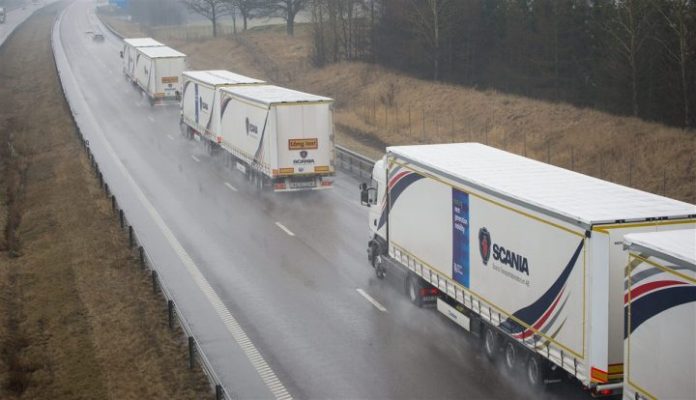Truck platooning comprises a number of trucks equipped with state-of-the-art driving support systems. This forms a platoon with the trucks driven by smart technology, and mutually communicating. Truck platooning offers many benefits and potential innovations for the transport sector globally.
Grouping vehicles into platoons is a method of increasing the capacity of roads. Platoons decrease the distances between cars or trucks using electronic, and possibly mechanical, coupling. This capability would allow many cars or trucks to accelerate or brake simultaneously. This system also allows for a closer headway between vehicles by eliminating reacting distance needed for human reaction.
With the trucks braking immediately, with zero reaction time, platooning can improve traffic safety. Platooning is also a cost-saver as the trucks drive close together at a constant speed. This means lower fuel consumption and less CO2 emissions. According to the European Truck Platooning, platooning efficiently boosts traffic flows thereby reducing tail-backs.
At the same time the impact of truck platooning goes far beyond the transport sector. Automated driving and smart mobility also offer realistic chances to optimize the labor market, logistics and industry, the European entity said.
“Truck platooning is operating trucks in close formation using automated control of the speed of the truck and taking advantage of V2V communication to coordinate their speeds,” Steven Shladover, manager of the PATH program at UC Berkeley, explained during a presentation at the Enterprise IoT Summit, which took place in Austin, Texas, earlier this year.
The executive said that PATH has been working on two different types of Truck Platooning namely Cooperative Adaptive Cruise Control (CACC) and Tightly-coupled platoon. In the CACC system, there is an ad-hoc combination of trucks, in which drivers can join and leave at will. In the second system, the first truck or driver supervises the operation and trucks joining or leaving should be authorized by the supervisor.
Last year six fleets of self-driving trucks arrived in the Netherlands from locations in Sweden, Germany, Denmark and Belgium. The trucks used platooning in which two or three trucks drive about 50 feet apart, connected by Wi-Fi. Sensors, processors and radios control the trucks, and the second and third trucks in line mimic each of the first truck’s actions without driver intervention. For this experiment, each self-driving truck carried a human as backup.
European Truck Platooning conducted the self-driving truck trial. Volvo, Scania, Daimler, MAN, DAF Trucks and Iveco all created truck platoons for the trial. All six of the platoons converged in Rotterdam, with the Scania platoon having driven more than 2,000 kilometers to get there.

